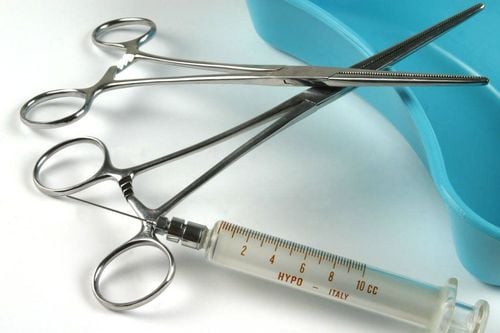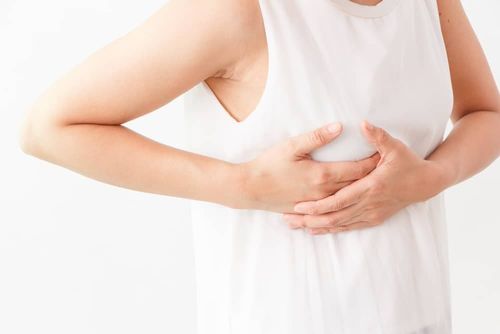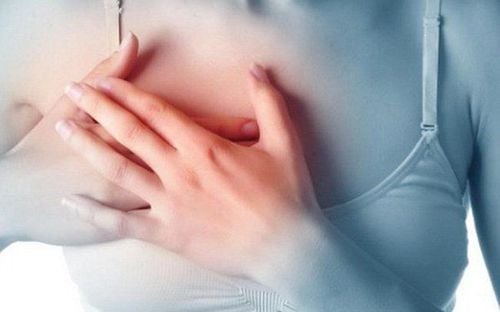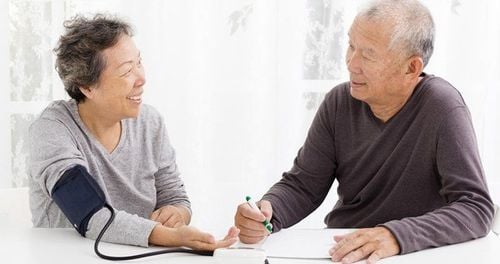This is an automatically translated article.
Mastitis is inflammation of the breast tissue, resulting in pain, swelling, heat, breast redness, fever, and chills. Mastitis while breastfeeding makes the mother feel tired, makes it difficult to care for the baby, especially they can be the cause of the baby's early weaning. But continuing to breastfeed, even while on antibiotics, is better for you and your baby.1. Causes of mastitis while breastfeeding
The breast is made up of several glands and ducts that lead to the nipple and the surrounding colored area known as the areola. The milk ducts extend from the nipple into the underlying tissue of the breast like the spokes of a wheel. Under the areola are the milk ducts. These tubes fill with milk during lactation after a woman gives birth. When girls hit puberty, hormonal changes cause milk ducts to grow and increase the amount of fat that accumulates in breast tissue. The milk-producing glands (mammary glands) are connected to the surface of the breast by milk ducts that can extend to the armpit area.Mastitis (English name is Mastitis) is an infection of breast tissue that occurs most often during breastfeeding. Mastitis can be caused by bacteria, usually from the baby's mouth, entering the milk ducts through a crack in the nipple.
Breast infections most commonly occur one to three months after childbirth, but they can occur in women who have not given birth and in women after menopause. Other causes of infection include chronic mastitis and a rare form of cancer called inflammatory breast cancer.
In healthy women, mastitis is rare. However, women with diabetes, chronic disease, AIDS, or a weakened immune system may be more susceptible to mastitis.
About 1% - 3% of nursing mothers will develop mastitis. Breast engorgement and incomplete breastfeeding can contribute to mastitis and make mastitis symptoms worse.
Chronic mastitis (English name is Chronic mastitis) occurs in women who are not breastfeeding. In postmenopausal women, a breast infection may be related to chronic inflammation of the ducts below the nipple. Hormonal changes in the body can cause milk ducts to become blocked due to dead skin cells and debris. These blocked ducts make the breasts susceptible to bacterial infections. Infections tend to return after antibiotic treatment.
Risk factors for increasing the likelihood of mastitis include:
Having had mastitis while breastfeeding Painful or cracked nipples, although mastitis can develop without the skin cracking Wearing a bra that fits Too tight or too tight can restrict milk flow Improper care technique Overly tired or stressed mother Poor nutrition Smoking
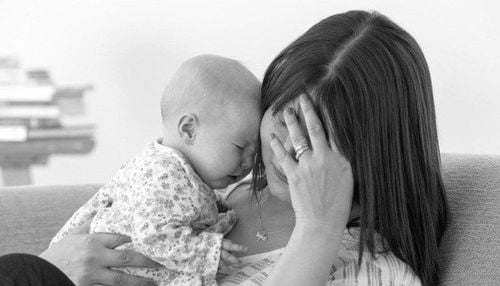
Mẹ quá mệt mỏi hoặc căng thẳng cũng là một trong số nhiều yếu tố gây viêm vú khi đang cho con bú
2. Symptoms of breast infection
A breast infection can cause pain, redness and warmth in the breast along with the following symptoms:Pain and swelling Body aches Fatigue Fatigue Fatigue Fever Fever and chills Breast abscess can be a complication of breast infection mastitis. Noncancerous masses such as abscesses are usually tender and feel mobile beneath the skin. The edge of the abscess is usually regular and clear. Signs of a more serious breast infection include:
Soft lump in the breast that doesn't get smaller after breastfeeding (If the abscess is deep in the breast, you may not be able to feel it) . Nipple discharge Persistent fever and no improvement in symptoms within 48-72 hours of treatment You should call your doctor as soon as you feel any suspicious lumps, whether you are breastfeeding or breastfeeding. are not. Get medical attention right away if:
Have any abnormal nipple discharge. Breast pain makes it difficult for you to live your day-to-day life. You have persistent breast pain for no apparent reason. You have any other related symptoms such as redness, swelling, pain that interferes with breastfeeding, a lump or soft lump in your breast that doesn't go away after breastfeeding. If you are breastfeeding, call your doctor if you have any symptoms of a breast infection so that treatment can be started promptly. You may need to be evaluated in a hospital emergency department if your breast pain is associated with other signs of infection (such as fever, swelling, or redness in the breast) and if your doctor is unable to see you. you timely. The following symptoms require urgent treatment:
Persistent high fever above 101.5°F Nausea or vomiting that prevents you from taking the prescribed antibiotics Purulent discharge from the breast Red streak extending towards the arm or your chest Dizziness, fainting, or confusion
3. Examination and diagnostic techniques for breast infection
The diagnosis of mastitis and breast abscess can often be made based on a physical exam. If it is not clear whether a mass is due to a fluid-filled abscess or a solid mass such as a tumor, you may need imaging techniques such as ultrasound. Breast ultrasound can also be helpful in distinguishing between simple mastitis and an abscess or in diagnosing a deep abscess in the breast. This noninvasive technique allows your doctor to see an abscess by placing an ultrasound probe over your breast. If an abscess is confirmed, the doctor will usually need to aspirate or drain the abscess and administer intravenous antibiotics.The doctor may draw fluid from the abscess, breast milk, or anything unusual from the abscess, to determine the type of microorganism causing the infection. This information can help your doctor decide which antibiotic is right for you.
Non-breastfeeding women with mastitis, or who do not respond to treatment, may have a mammogram or a breast biopsy. This is a precaution because a rare type of breast cancer can cause symptoms similar to mastitis.
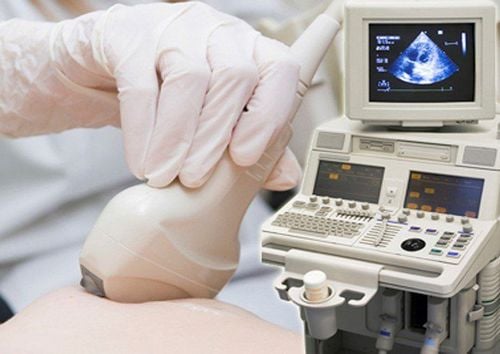
Siêu âm vú cũng có thể hữu ích trong việc phân biệt giữa viêm vú đơn thuần và áp xe hoặc chẩn đoán áp xe sâu trong vú
4. Treatment of breast infections
4.1. Treating mastitis at home After seeing your doctor, you can use the following to help your breast infection heal:Pain relievers: Take acetaminophen (Tylenol) or ibuprofen (such as Advil) to relieve pain. These medicines are safe while breastfeeding and will not harm your baby. Your doctor may prescribe a prescription pain reliever if your pain is severe and doesn't get better with over-the-counter medication. In mild cases of mastitis, you may not need antibiotics. If you are prescribed an antibiotic, you need to finish the prescription even if you feel better within a few days of use. Breastfeed frequently: You will still need to breastfeed from the affected breast, although the breast will be sore and you may be taking antibiotics. Regular emptying will prevent engorgement and blocked milk ducts, preventing mastitis from getting worse. If needed, you can use a breast pump to relieve pressure and pump all the milk out. You can also breastfeed from the unaffected side and supplement with formula as needed. The infection won't harm the baby because the germs that cause the infection probably come from the baby's mouth in the first place. Breastfeeding from an infected breast should be avoided when an abscess is present. Pain relief: Warm compresses before and after feeding can often help relieve pain. A warm bath can also be effective. If warm compresses don't work, you can also apply ice after feeding, which can also help you feel more comfortable and reduce pain. Avoid applying ice just before breastfeeding as it can slow down milk flow. Drink lots of water, drink at least 10 glasses a day. Eat well-balanced meals and add an extra 500 calories per day while breastfeeding. Dehydration and poor nutrition can reduce your milk supply and make you feel more tired. 4.2. Mastitis medications For simple mastitis without an abscess, your doctor will usually just prescribe an oral antibiotic. Cephalexin (Keflex) and dicloxacillin (Dycill) are two of the most common antibiotics of choice, but several others may also be indicated. The antibiotic prescribed will depend on your specific medical condition and allergies. These medicines are safe to use while breastfeeding and will not harm the baby.
If your infection gets worse even after you've taken antibiotics, or if you have a deep abscess that requires surgical treatment, you may be hospitalized for intravenous antibiotics.
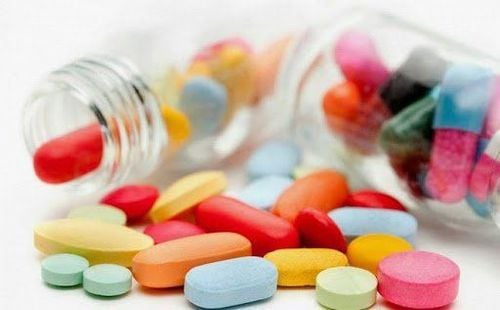
Đối với viêm vú đơn giản không có áp xe, thường bác sĩ sẽ chỉ cần kê thuốc kháng sinh đường uống
However, if the abscess is deep in the breast, you may need surgical drainage in the operating room. This procedure is usually done while you are under general anesthesia to minimize pain and drain the abscess completely. Antibiotics and warm compresses on the area are also used to treat abscesses.
Mastitis does not cause cancer, but cancer can mimic the symptoms of mastitis. If a breast infection is slow to clear up, your doctor may recommend a mammogram or other diagnostic technique to rule out cancer.
4.4. Follow-up care after a breast infection If you have a breast infection, you may need to be checked again in 24-48 hours and take all of your prescribed antibiotics.
Take temperature three times a day for the first 48 hours after starting treatment. Accordingly, you should call your doctor if you have a high fever, are vomiting, or are increasingly red, swollen, or painful in your breast. Monitor the condition after one to two weeks to make sure the infection is gone. If an infection spreads or an abscess develops, you may need intravenous antibiotics or surgical treatment.
5. Prevention of mastitis
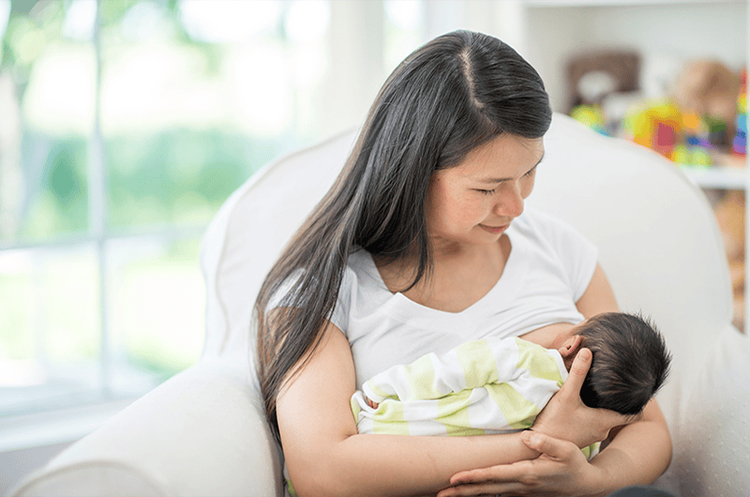
Mẹ nên cho bé bú đều 2 bên để ngăn ngừa viêm vú
Feed your baby evenly from both breasts. Empty the breasts completely to prevent engorgement and blocked milk ducts. Use good breastfeeding techniques to prevent sore, cracked nipples. Dry the side of sore or cracked nipples. Prevent moisture from accumulating in breast pads or bras. Avoid dehydration by drinking plenty of water. Practice careful hygiene: Wash hands, clean nipples, keep baby's hygiene. After giving birth, the mother's body changes, and the mother can suffer from many diseases such as postpartum hemorrhage, urinary incontinence, digestive disorders, bowel and urinary disorders, rectal prolapse,... In particular, very Many mothers have fever due to mastitis, breast abscess, breast infection when breastfeeding. Therefore, after giving birth, the mother can perform a general health examination at Vinmec International General Hospital to assess her postpartum health. Mothers will have the opportunity to visit with leading specialists, combine with many other specialties to give advice, care, and help mothers improve their postpartum health, as well as how to take good care of their children. .
Please dial HOTLINE for more information or register for an appointment HERE. Download MyVinmec app to make appointments faster and to manage your bookings easily.
Reference source: babycenter.com, webmd.com



